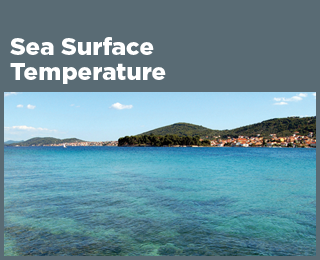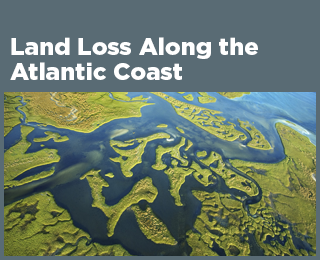Climate Change Indicators: Oceans
Covering about 70 percent of the Earth’s surface, the world’s oceans have a two-way relationship with weather and climate. The oceans influence the weather on local to global scales, while changes in climate can fundamentally alter many properties of the oceans. This chapter examines how some of these important characteristics of the oceans have changed over time.
Why does it matter?
As greenhouse gases trap more energy from the sun, the oceans are absorbing more heat, resulting in an increase in sea surface temperatures and rising sea level. Changes in ocean temperatures and currents brought about by climate change will lead to alterations in climate patterns around the world. For example, warmer waters may promote the development of stronger storms in the tropics, which can cause property damage and loss of life. The impacts associated with sea level rise and stronger storm surges are especially relevant to coastal communities.
Although the oceans help reduce climate change by storing large amounts of carbon dioxide, increasing levels of dissolved carbon are changing the chemistry of seawater and making it more acidic. Increased ocean acidity makes it more difficult for certain organisms, such as corals and shellfish, to build their skeletons and shells. These effects, in turn, could substantially alter the biodiversity and productivity of ocean ecosystems.
Changes in ocean systems generally occur over much longer time periods than in the atmosphere, where storms can form and dissipate in a single day. Interactions between the oceans and atmosphere occur slowly over many months to years, and so does the movement of water within the oceans, including the mixing of deep and shallow waters. Thus, trends can persist for decades, centuries, or longer. For this reason, even if greenhouse gas emissions were stabilized tomorrow, it would take many more years—decades to centuries—for the oceans to adjust to changes in the atmosphere and the climate that have already occurred.
Summary of Key Points
- Ocean Heat. Four independent analyses show that the amount of heat stored in the ocean has increased substantially since the 1950s. Ocean heat content not only determines sea surface temperature, but also affects sea level and currents.
- Sea Surface Temperature. Ocean surface temperatures increased around the world during the 20th century and continues to rise. Even with some year-to-year variation, the overall increase is clear, and sea surface temperatures have been consistently higher during the past three decades than at any other time since reliable observations began in the late 1800s. The year 2023 was the warmest ever recorded.
- Marine Heat Waves. Short-term spikes in ocean temperature, known as marine heat waves, are an extreme condition that can severely affect marine life. Between 1982 and 2023, the annual cumulative intensity of marine heat waves increased in most U.S. coastal waters, with the largest changes in waters off the northeastern U.S. and Alaskan coasts. Marine heat wave events have also become more widespread and more severe in most U.S. coastal regions in recent years.
- Sea Level. When averaged over all of the world’s oceans, sea level has risen at a rate of roughly six-tenths of an inch per decade since 1880. The rate of increase has accelerated in recent years to more than an inch per decade. Changes in sea level relative to the land vary by region. Along the U.S. coastline, sea level has risen the most along the Mid-Atlantic coast and parts of the Gulf coast, where several stations registered increases of more than 8 inches between 1960 and 2023. Sea level has decreased relative to the land in parts of Alaska and the Pacific Northwest.
- A Closer Look: Land Loss Along the Atlantic Coast. As sea level rises, dry land and wetlands can turn into open water. Along many parts of the Atlantic coast, this problem is made worse by low elevations and land that is already sinking. Between 1996 and 2011, the coastline from Florida to New York lost more land than it gained.
- Coastal Flooding. Flooding is becoming more frequent along the U.S. coastline as sea level rises. Most sites measured have experienced an increase in coastal flooding since the 1950s. The average number of flood events per year has progressively accelerated across decades since 1950. The rate of increase of flood events per year is the largest at most locations in Hawaiʻi and along the East and Gulf Coasts.
- Ocean Acidity. The ocean has become more acidic over the past few decades because of increased levels of atmospheric carbon dioxide, which dissolves in the water. Higher acidity affects the balance of minerals in the water, which can make it more difficult for certain marine animals to build their protective skeletons or shells.







